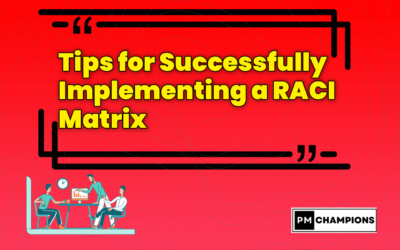“A service under T&M (Time and Material) does not imply an obligation of result”
“A commitment to results is necessarily a fixed-price”
“The service is fixed-price, but the billing is based on the time spent”
“The commitment of means relieves the company of any responsibility for the achievement of the client’s objectives”
“A project on a T&M contract is just about providing resources for the client”So many selected untruths that can be heard regularly and that deserve some clarification.


Agility:
What is a fixed-price ?
A fixed-price contract service refers to a service provided in return for a fixed amount.
The service provider who is engaged through a fixed-price contract is obliged to deliver a specific project to his client for a fixed amount, and in most cases within the framework of a defined schedule.
The Fixed Price commitment takes full advantage of the triple constraint of cost, timeand scope.
Each of the 3 components is fixed either in the contract or the start of the project

Invoicing is generally based on the progress of the project, according to a predefined schedule that can correspond to the phases of the project (20% at the time of ordering, for example).
As far as possible, payment deadlines should not be linked to validation or acceptance milestones and delivery milestones should be preferred.
In this context, it is essential to obtain a clear and precise expression of the customer’s needs. Either through a set of specifications or through our technical and commercial proposal updated following discussions between the service provider and its customer.

Usually, in the context of fixed-price contracts, the service provider is subject to an obligation of result (also known as a commitment of result), on the objective and quantifiable elements of the services (e.g. schedule, SLAs, etc.).
Popularized example of fixed-price
The service provider commits for a budget of 350k€ to integrate and put into production the customer’s e-Commerce site by November 10, 2030. In accordance with the requirements provided by him and detailed in the contract.
What the fixed-price means to the customer
The big advantage of the fixed-price is that the service provider bears the costs in the event of a project drift (unforeseen charges and/or rework): he controls his budget.

As the fixed-price most often implies a firm deadline, time management is also advantageous for the customer (Go-To-Market).
On the other hand, and even if the fixed-price contract is absolutely reassuring for the client, any modification of the commitment framework at his initiative exposes him to a request for an additional budget from the service provider.
A technical-functional change or a new requirement not initially foreseen implies agreeing on an extended deadline and an additional cost.
It should be noted that the human and technical resources implemented by the service provider, and even if the customer is very tempted to interfere with the proposed system, remain at the discretion of the service provider.
What the fixed-price means for the provider
The success of a fixed-price commitment is more demanding.
It starts at the Pre-Sales where the maturity of the project (and the customer) will be a key factor in engagement.
The needs expressed by the client (specifications, requirements file, specifications, etc.) must be as precise and exhaustive as possible to allow the definition of relevant costing hypotheses and, ultimately, a realistic budget definition.

It continues in Delivery, where the project management by the service provider will have to be very precise so as not to go beyond the framework initially agreed with the client (expenses, schedule, resources, etc.).
Even if there is a contingency to absorb operational risk.
For the service provider, however, the primary objective remains to deliver the project at a lower cost than expected, while respecting its commitments in terms of schedule and quality.
What is an T&M (Time and Material) contract?
A Time & Material service is a service invoiced by Time & Material.

Invoicing is then based on a daily rate and the days actually worked by the service provider’s teams.
This billing method is generally chosen as part of Technical Support (TS) services.
Even if there is often no deadline for the completion of the project or the completion of a specific deliverable. The service is provided over a given calendar period which corresponds to the duration of the commitment between the parties (i.e. duration of the contract; of the order).
However, this is a question of service provision and not of the provision of resources.
The services in question, as well as the associated potential deliverables, must therefore be clearly defined in the technical and commercial proposal and/or in the contract.
Therefore, the client must also express his or her needs (the profile, but also the purpose of the service and the expectations concerning them).
Popularized Example of T&M
The service provider undertakes to provide the client with a team of 4 targeted profiles on a full-time basisfrom January 1 to December 31, 2030 for Technical Support services aimed at developing a clienteling product.
What the T&M means for the client
The T&M can allow the client to strengthen its project team by bringing in the expertise of external resources.

flexibility
This engagement model has several advantages: great flexibility (peaks and drops in activity, for example), contribution to expertise not present in-house, speed in scaling.
What does the T&M contract mean for the service provider ?
For the service provider, the objective is to ensure that the service is long-term and, if possible, to increase the number of positions with the client by demonstrating the quality of its employees.
The service provider must implement change management mechanisms (early departure, replacement, notice, time limits for increasing and decreasing costs, etc.) to deal with contingencies.
Unitary Technical Support , i.e. involving only a very few employees or only one with the customer, is a burden for the service provider in terms of management and is of little interest in terms of business development: it should therefore be avoided when possible.
Point of attention : the offence of haggling and lending unlawful labour
In France and in most countries, the provision of staff (except temporary) is prohibited.
The service provider as a service provider does not make its staff available to customers (even in the case of T&M and/or technical support).
Also, to avoid any risk of haggling or the illegal lending of labour, it is necessary to pay close attention to concepts, vocabulary and practices, in particular:
✔️ I can present to the client the resources approached for a project but under no circumstances do I have the client conduct “recruitment interviews”;
✔️ I only communicate anonymised CVs and only present “prospective” teams;
✔️ I make sure that the HR management of the teams is well provided by the service provider (regular interviews, training, validation of leave);
✔️ I make sure that the client has clearly defined their project/mission or has identified the expected deliverables;
✔️ I make sure that the resources provided by the service provider are clearly identified as being external to the Client’s teams (external email address, badge and email signature);
✔️ I make sure that the resources provided by the service provider do not have access to customer benefits (private sales to staff, corporate gifts, etc.).
What is an Obligation of Result?
When the service provider commits to an obligation of result (also known as a “commitment of result”), the company commits to the client to achieve a defined result.

In practice, in the event of non-achievement of the expected result, the service provider is by default in default unless it can be proven that this non-achievement is the consequence of the fault of the client, a third party or a case of force majeure.
This obligation of result is often provided for in fixed-price contracts, but it is quite possible to provide for an obligation of result in a contract invoiced in T&M mode, for example on the completion of a deliverable within a specific deadline.
It is advisable to avoid committing to a general obligation of result but to limit it to objective, quantifiable elements that are fully controlled by the service provider (e.g. mandatory deadlines, SLAs, functional specifications defined by the service provider).
What is an Obligation of Means?
When the service provider commits to an obligation of means (also known as a “commitment of means”), the company undertakes to implement the means necessary to carry out the service.
In practice, in the event of non-compliance with the service, the Client must provide proof that the service provider has not implemented the expected means.
Technical Support services are generally provided on the basis of an obligation of means, but it is quite possible to provide for an obligation of means in a contract invoiced in fixed-price mode.
Best Practices Checklist for Writing a Technical and Business Proposal
✔️ I qualify the service provider’s obligation in my technical and commercial proposal, regardless of the nature of the services: “Obligation of means” or “obligation of result on the objective and quantifiable elements controlled exclusively by the service provider”
✔️ I reject any general obligation of result.
✔️ I do not make an “end-to-end” or “turnkey” or “good finish” commitment (commitment to the entire project, including the services/solutions of third-party service providers, mainly in the context of integration projects).
✔️ If the client requests a guarantee, I limit it in time and take the necessary associated contingency (i.e. factored into the financial model). I disclaim any performance guarantee, which is equivalent to an unlimited warranty.
✔️ I only commit to achievable SLAs (even if there are no penalties).
✔️ I am transparent with the client in the event of subcontracting and ask for their prior written consent. It should be noted that from a legal point of view (contract, law, GDPR) the provider’s offshore agency is considered a subcontractor or sub-processor.
✔️ I systematically include in my answer the T&Cs (Terms and Conditions) or the contract template or the draft contract of the client reviewed by the Legal Department.
✔️ I don’t start the services until the contract has been signed. Indeed, services provided without contractual coverage are carried out at the risk of the service provider (absence of liability ceiling, risk of refusal of payment by the client, etc.).
✔️ If I have included a contract template or the T&Cs (Terms and Conditions) in my proposal, I can initiate the service on the basis of an order from the customer referencing the technical and commercial proposal of the service provider.
✔️ I don’t forget that any technical and commercial proposal is binding for the service provider.
✔️ It must therefore contain all the safeguards necessary to protect the interests of the service provider, such as all the hypotheses (e.g. average number of tickets per month in the context of a Third-Party Application Maintenance), the customer prerequisites (e.g. mobilization of the client’s team, additional information required, deadline for validation of deliverables, etc.), reservations to the specifications, applicable contractual conditions, etc.






0 Comments